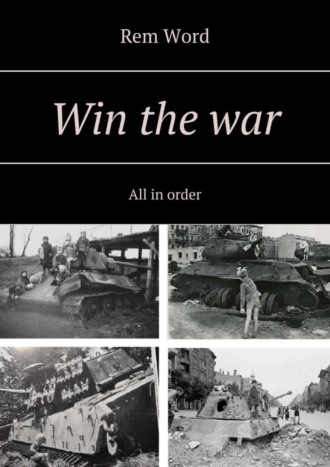
Полная версия
Win the war. All in order
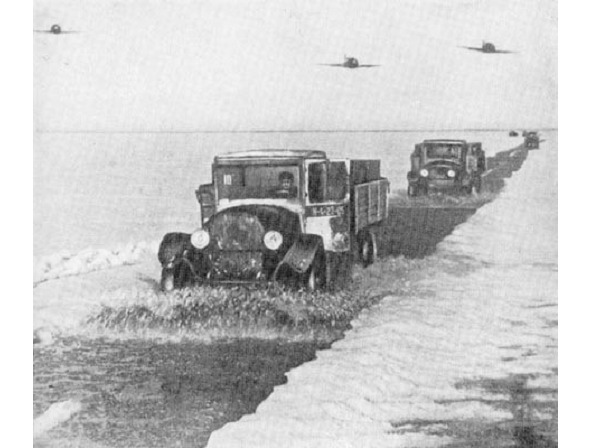
On the ice of Lake Ladoga, bypassing the positions of the Wehrmacht, the «Road of Life» is being laid. Under attacks from the air, grain is brought into the city. Children are evacuated on return flights. From December 25, 1941, the norms for bread production are somewhat increasing. N. Nikulin: «… Then we all signed up for the militia… We were given rifles, ammunition, food (for some reason, herring – apparently what was at hand) and loaded onto a barge that stood near the Malaya Neva River. And here for the first time I was saved by my Guardian Angel, who took on the image of an elderly colonel, who ordered everyone to disembark from the barge and build ashore. At first we did not understand anything, and the colonel carefully looked at everyone with his red eyes for insomnia and ordered several to break down. Among them was me. «Go home! Said the colonel. «And without you, the snotty, TAM is sickening!» It turns out that he was trying to fix something, to do it properly, to prevent the senseless death of yellow-headed youths. He found time and energy for this! But I understood all this later, and then returned home, to the bewildered family…The barge, meanwhile, proceeded along the Neva and beyond. On Volkhov, it was rumored to have bombed and drowned Messerschmitts. The militiamen were sitting in the holds, the hatches of which the prudent bosses ordered to lock-so that good things would not run away, darling!I returned home, but a week later I received a formal mobilization agenda … ”

Finnish soldiers pose with tortured Soviet prisoners of war, early 1942. In the summer and autumn of 1941, Finland regains territories lost in the Winter War. The German-Finnish Karelian army continues the offensive, seizes Petrozavodsk and blocks Leningrad from the north. In the occupied territories, the Finns carry out segregation of the population according to their nationality. All responsible Soviet officials, business leaders, newspaper editors, police officers, and the like, are sent to concentration camps. A justified hatred of the Bolshevik regime, the Finns mingle with nationalist aspirations. Finland is hardly better than fascist Germany. The ambitions of a sparsely populated country are not shackled by spiritual ideals, but only by its technical capabilities. But, July 30—31, an ally of the USSR, the UK inflicts air strikes on Petsamo and Kirkenes. Damaged ship, two go to the bottom. British Air Force lost 16 aircraft.After this prelude, December 6, 1941, the United Kingdom declares war to Finland.One way or another, Suomi refuses to conduct active hostilities. N Nikulin:“… In early November, we were returned to the cold, without glasses, Leningrad barracks. Before being sent to the front, the companies were instructed to patrol the city. Checked documents, detained suspicious. Among the latter were the entourage, who came out of the Luga and other "boilers". They were terribly emaciated people – bones covered with brown weathered skin …The city was very different from what it was in August. Everywhere traces of splinters, a lot of houses with destroyed facades, opened the apartment as if in a section: in some places were kept on the remnants of the floor bed or chest of drawers, on the walls there were clocks or paintings. It's cold, dank, gloomy. Klodt horses removed. Yusupov Palace is damaged. From the bottom to the top of the Museum of Ethnography there is a huge crack. The spiers of the Admiralty and the Peter and Paul Cathedral are in dark cases, and the dome of Isaac is painted in neutral paint for masking. In the squares buried anti-aircraft guns. Occasionally, German shells rush with a howl and rush away. Dimensionally knocking metronome. The wind is wearing yellow foliage, branches, some dirty paper … "
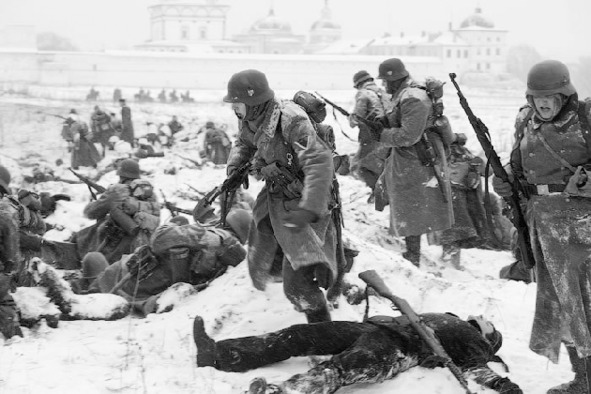
German soldiers on the outskirts of Moscow. According to the directive of Hitler, the assault is carried out without proper preparation and strengthening of communications, since September 30, 1941.
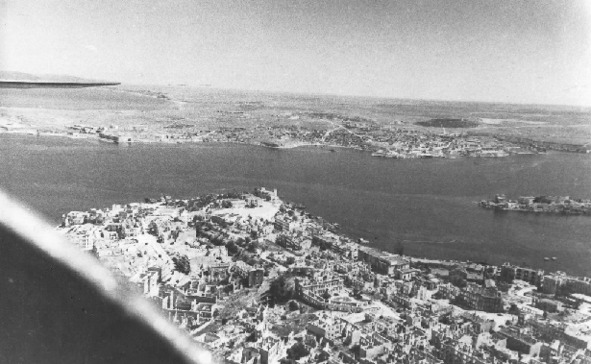
Sevastopol, 1941. The first assault on the base of the Black Sea Fleet will take place on October 30 – November 21
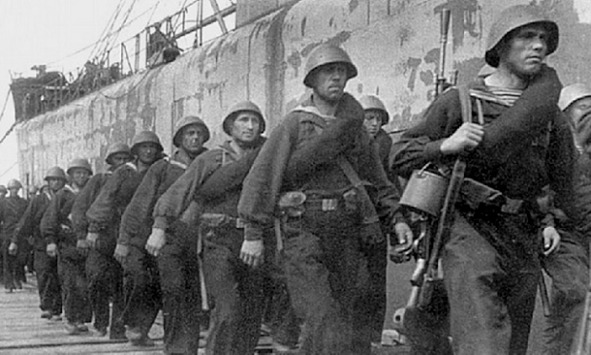
Sailors of Sevastopol. On land, sailors form elite infantry, aware of the value of combat brotherhood, accustomed to handling sophisticated equipment.
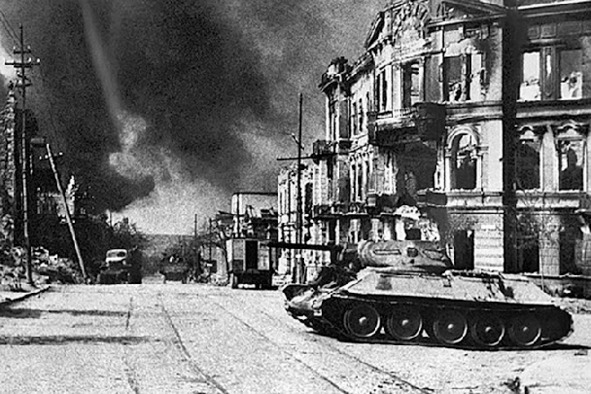
The outskirts of Sevastopol, autumn 1941
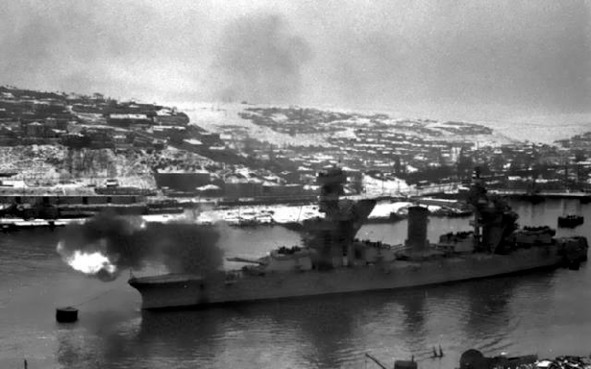
The battleship Sevastopol is firing. The first and second storming of the city of military glory is frustrated thanks to the artillery support of the ships in the bays.
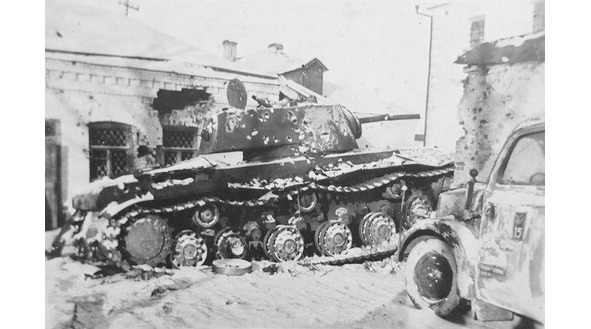
The Germans are increasing the pressure in the center of the USSR. Wrecked tank KV-1 with marks from dozens of shells in the city of Venev, Tula region
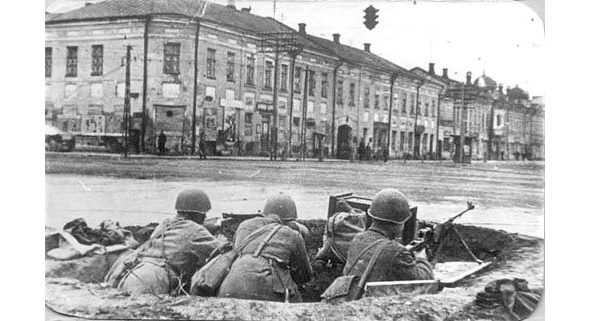
The defense of the city of Tula, November 1941. The most important center of the Soviet defense industry is almost completely surrounded by German units. The city holds a siege, and does not allow the Wehrmacht to strike at Moscow from the south

On December 28, 1941, the Red Army and the fleet landed troops in Kerch. A day later, landing in Feodosia. This operation is successful. The German division occupying Kerch evacuates into the depths of the Crimea peninsula, throwing heavy equipment
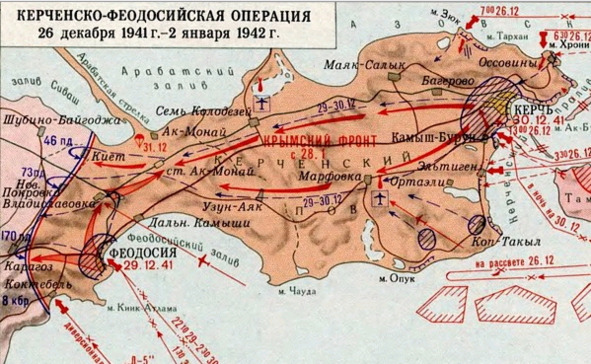
Subsequent, poorly prepared and indecisive attacks on Wehrmacht fortified positions only exhaust the mechanized units of the Red Army in the Crimea.
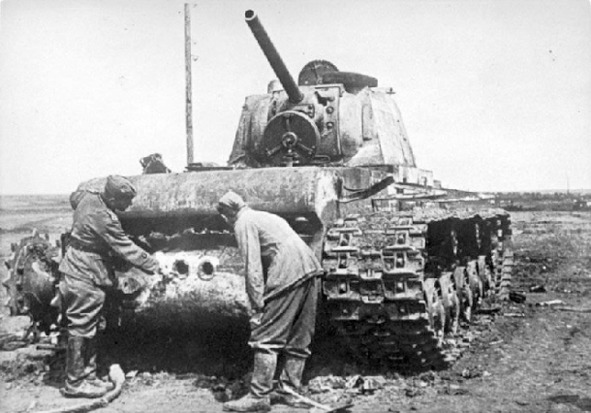
The downed tank KV-1. District of the city of Old Crimea. This is the last frontier of the advancement of the Soviet marines. December 1941
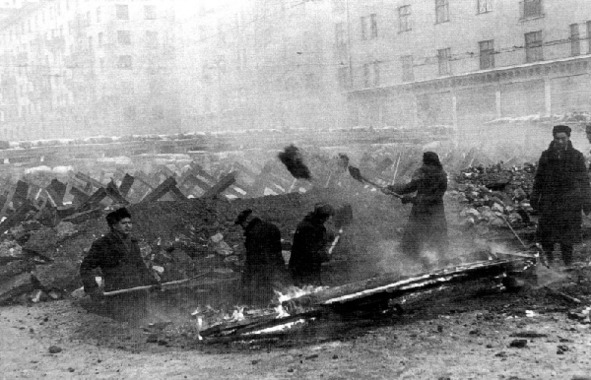
The construction of earthworks for the streets of the capital of the USSR
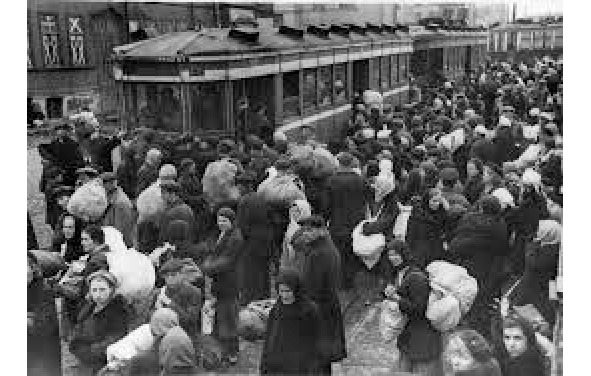
Panic in Moscow, October 16, 1941
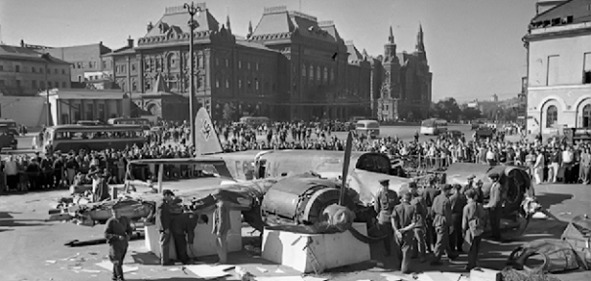
To overcome the fear of the Wehrmacht forces, an exhibition of German military equipment is organized in the center of Moscow.
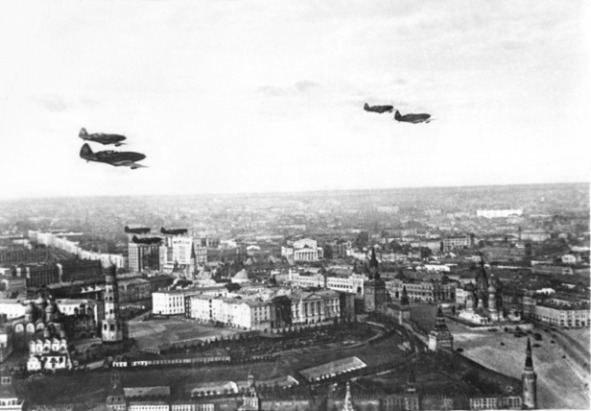
Moscow, 1941. MiG-3 fighters. The capital is covered by impressive air defense forces. Hitler’s plan for the destruction of the city from the air is not carried out
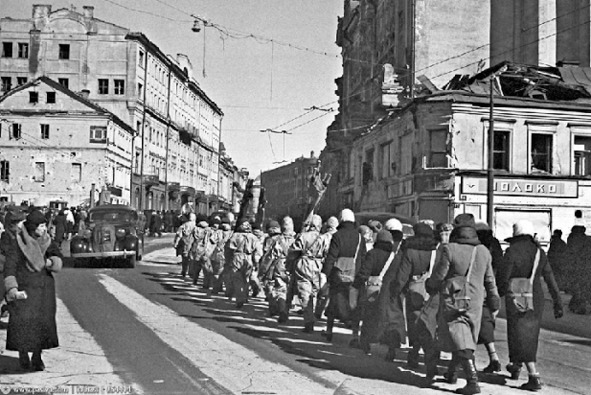
Two hundred thousand civilians are mobilizing to the aid of the Red Army in Moscow. Almost all of them die in the coming months.
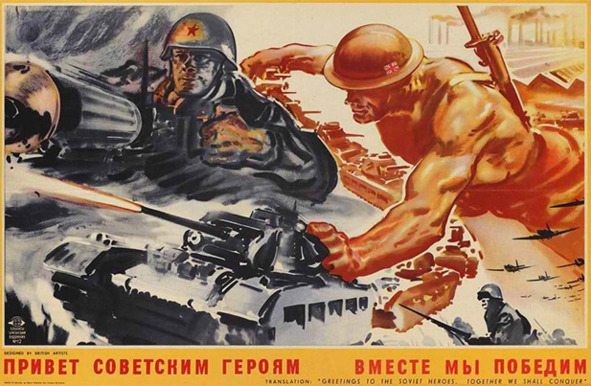
American poster in support of the Lend-Lease
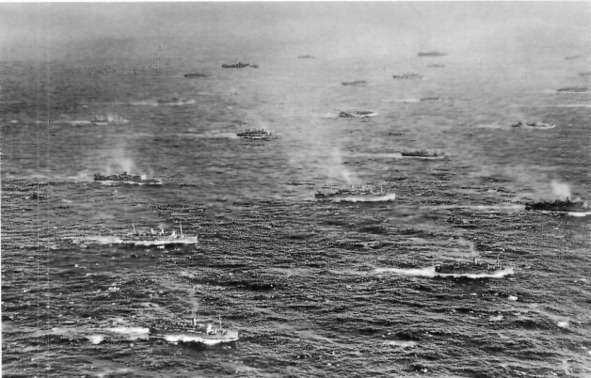
In November 1941, supplies under Lend-Lease start. The Soviet Union receives the first 670 aircraft, about 400 tanks and 3,000 other military cargoes from the United States and Great Britain. In the battle of Moscow, the armored vehicles «Valentine» and «Matilda II» account for 35% of all tanks used by the Red Army. Fighters «Tomahawk» and «Hurricane» form 16% of the capital’s air defense fleet. Photography is one of the first Lend-Lease sea convoys. November 1941
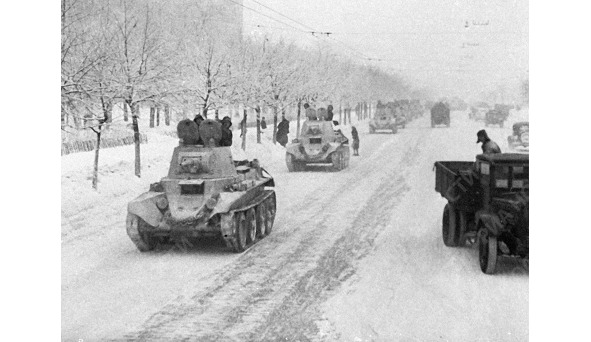
Moscow, November 1941. The BT-7 tanks are sent to the front.N. Nikulin: “… At the end of November, our offensive began. Only now I learned what war is, although I still did not participate in the attacks. Hundreds of wounded, dead, cold, hunger, stress, a week without sleep … On one relatively quiet night, I sat in a snow-covered hole, unable to fall asleep from the cold. Scratching lousy sides and crying from longing and weakness. That night a fracture occurred in me. From somewhere there were forces. In the morning I crawled out of the hole, began to scour the empty German dugouts, found frozen like a stone, potatoes, made a fire, cooked a brew in a helmet and, having filled my belly, I felt self-confidence. From that moment my rebirth began. Appeared defensive reactions, energy appeared. There was a gut feeling, telling how to behave. There is a snap. I began to get grub. Then he chopped horseflesh with an ax from the thigh of a killed German batyuga – he froze from the cold. That found an abandoned potato pit. Once a mine was killed by a passing horse. Twenty minutes later, only the mane and entrails remained, as craftsmen like me instantly cut the meat into pieces. The driver did not even have time to recover, and remained sitting in a sleigh with the reins in his hand. Another time, we were marching along the road, and suddenly, ahead of us, the projectile turned over the kitchen. Buckwheat gruel spilled on the snow. Immediately, without saying a word, everyone took out the spoons and the feast began! But the movement on the road can not be stopped! A cart carrying hay, a truck, went through the porridge, and we all ate and ate while there was what was left … I collected breadcrumbs and crusts near warehouses, kitchens – in a word, I got food where I could … "
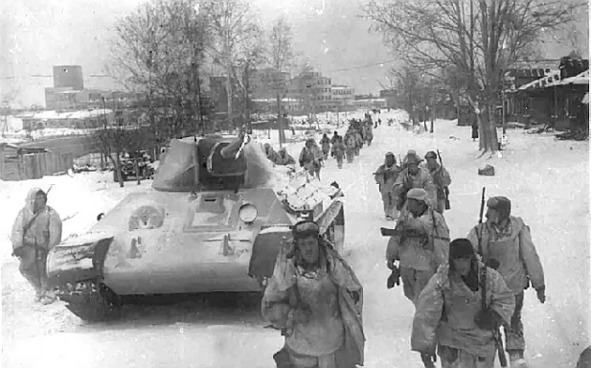
«Siberian», in fact – the Far Eastern divisions, transferred to Moscow after the intelligence officers’ assurances that there would be no war with Japan, are the most prepared military units
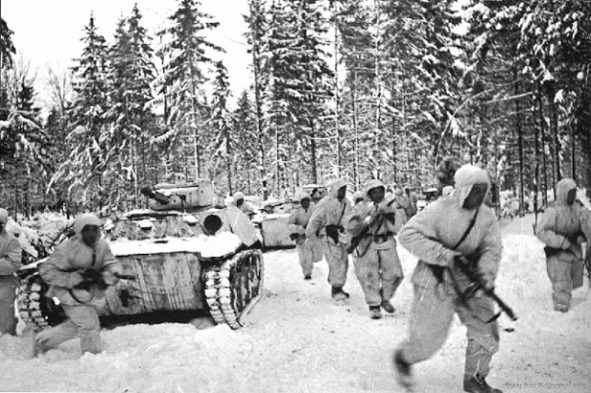
Moscow strategic offensive operation. T-70 tanks and well-trained soldiers of the Red Army. November 1941
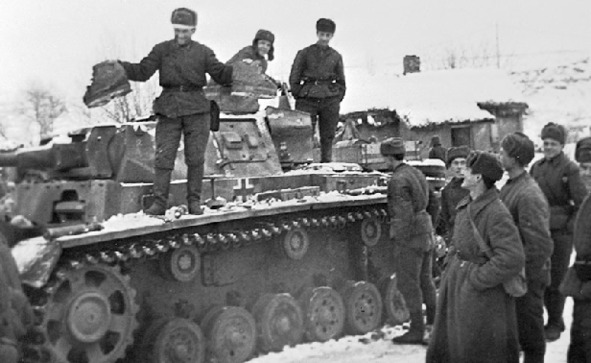
As a result of the Moscow battle, the German troops are moving back 100—120 km. from the capital. For the first time Soviet soldiers see such a significant amount of damaged and abandoned German equipment.
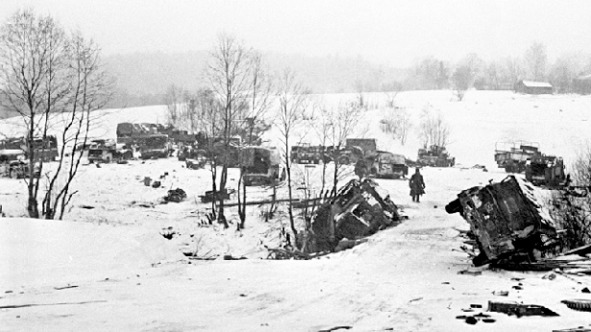
The German motor convoy, defeated near Moscow, January 1941. N. Niulin: «… The offensive continued, at first successfully. The Germans fled, abandoning guns, cars, all sorts of supplies, shooting horses. I was convinced that the stories about their atrocities were not an invention of newspapermen. I saw the corpses of burned prisoners with stars carved on their backs. The villages in the way of withdrawal were all broken, the inhabitants were driven out. There were very few of them left – hungry, ragged, miserable …»
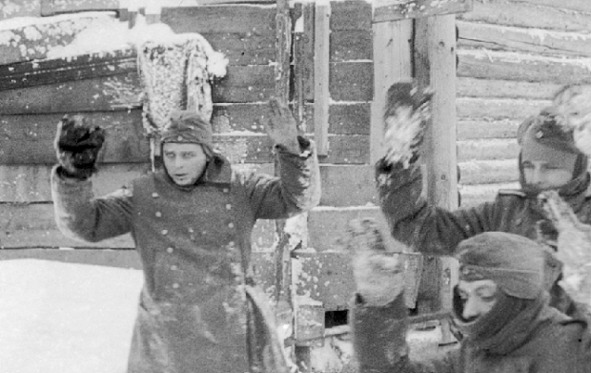
German prisoners of war. For the first time, Soviet troops take German soldiers prisoner in groups of 10—15 people.
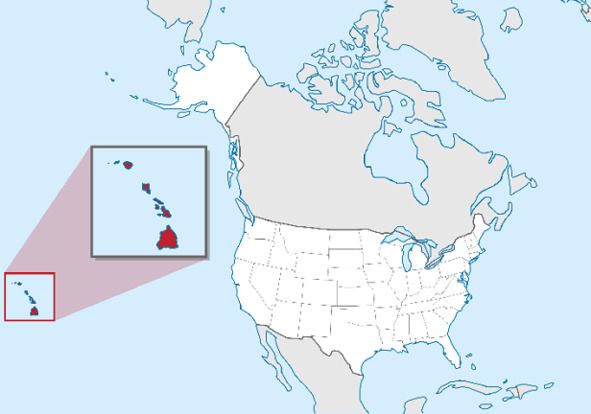
Pearl Harbor, the most important Pacific naval base of the United States
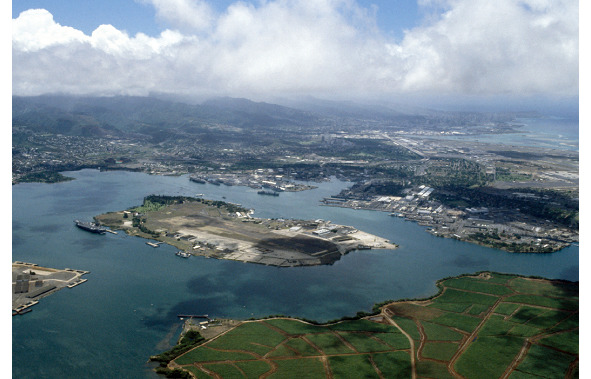
Pearl Harbor, modern photography. Something like this, in color, 80 years ago (assuming that it is now 2019), the Japanese pilot sees it all
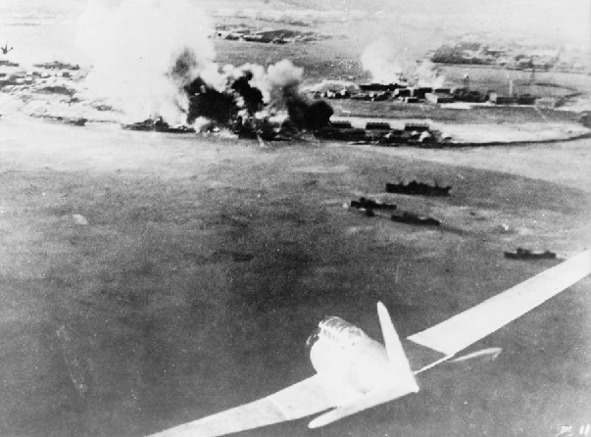
The full-scale war in the Pacific gives the first visible sprout on November 26, 1941. The United States, seeing the ambitions of the Pacific power as a threat to its security, announces an ultimatum to Japan: to leave China, Indonesia and Korea already conquered. In response, on December 7, 1941, Japanese aircraft hit the US base in Hawaii (Pearl Harbor, Pearl Harbor, in the middle of the Pacific Ocean). The official declaration of war is late (which gives America moral superiority). 2,400 people die. Four battleships of the First World War, four destroyers, 188 aircraft are sent to the bottom. Twenty-three submarines and, we note, six aircraft carriers, the main striking force of the US Navy, which had just emerged into the open ocean, remain intact. The loss of the Japanese side – 29 aircraft, 55 pilots, 9 submariners from five ultra-small submarines. The photo – the attack «Zero» Imperial Air Force
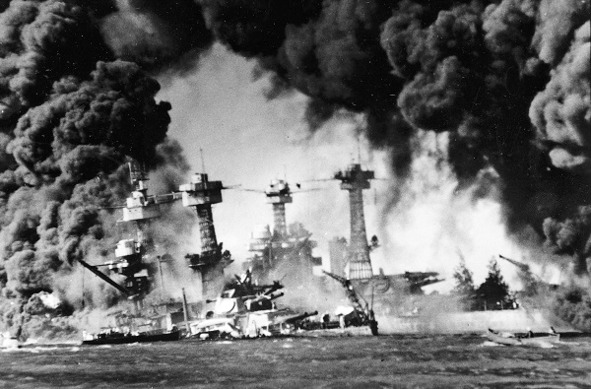
Pearl Harbor, December 7, 1941
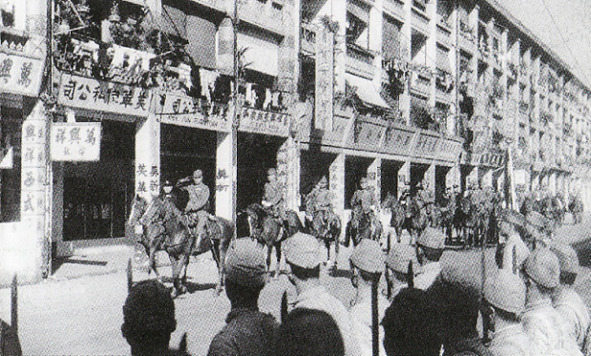
Japan has a major initial success. On December 8, 1941, the samurai stormed the dominion of Great Britain, Hong Kong. After 18 days of defense, the garrison capitulates. 9 thousand British and Canadian soldiers are taken prisoner. The irretrievable loss of Japan – 2 thousand people. Anglo-Saxon allies lose 4 thousand. Expansion throughout the Pacific and mainland China is gaining an unprecedented scale. The photograph shows the parade of Japanese troops in Hong Kong, January 1941.
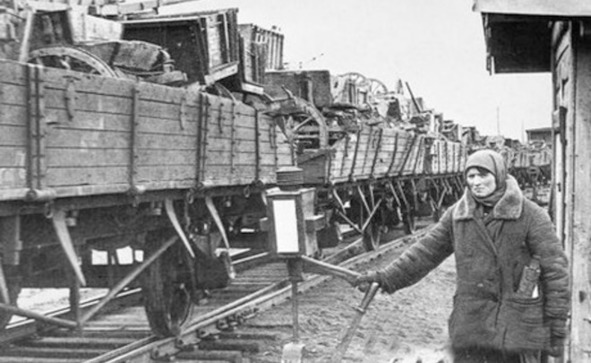
Since June 1941, thousands of trains with people and equipment being evacuated rush to the East of the USSR
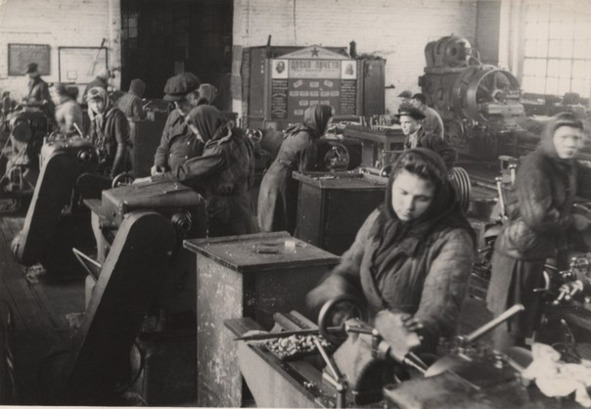
New factories built in Siberia and beyond the Urals are sometimes leveled earthen areas, without walls and roofs, with rows of machines on which military products are manufactured. Mostly women and teenagers work here.
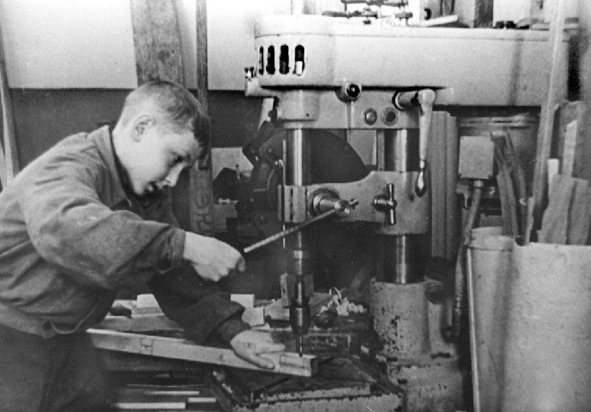
Teenager 12—13 years at work. For adults, work shifts last for 15—16 hours
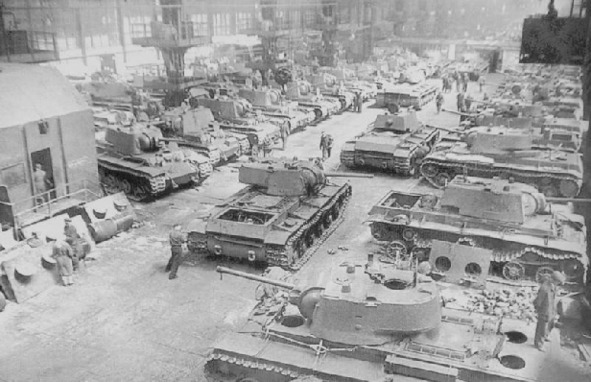
The production of KV-1 tanks at the monstrously expanded Chelyabinsk Tractor Plant since 1941. New huge tank-building plant called «Tankograd»
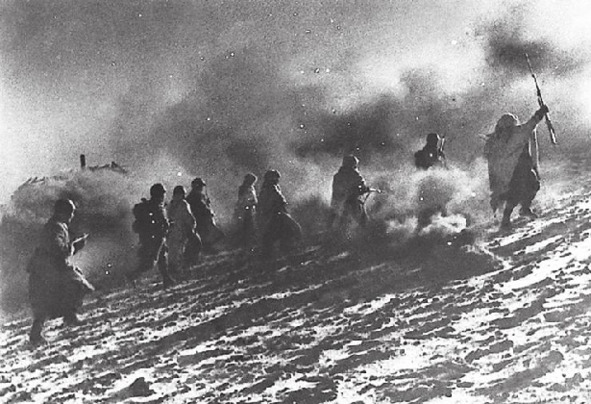
After the fairly successful Moscow battle, Stalin perks up and stops listening to the advice again. The Supreme Commander believes that 1942 is the year of the «final defeat of the German fascist troops.» As a continuation of the battle near Moscow, the Rzhev-Vyazma operation starts on January 8 – the general offensive of the Soviet troops on the enemy’s well-trained positions, without concentrating forces and assets in certain areas. N. Nikulin: «… – Attack! – Calls the owner of the Kremlin. … Well, if the colonel tries to think out and prepare the attack, check whether everything possible has been done. And often he is simply inept, lazy, drunk. Often he does not want to leave the warm shelter and crawl under the bullets… Often, the artillery officer revealed the targets is not enough, and, not to risk, shoots from afar at the squares, it’s good, if not his own, although it happened quite often… It happens that the supplier washed it down and had fun with the women in the nearest village, and the shells and food are not delivered… Or the major went astray and took his battalion along the compass not at all where it should be… Confusion, confusion, deficiencies, fraud, non-fulfillment of the debt, so characteristic of us in peaceful life, to War appear brighter than anywhere else. And for all one pay – blood. Ivana go on the attack and die, and the one sitting in the shelter drives everything and drives them. The psychology of the person going to the assault and the one who watches the attack differs remarkably – when you don’t have to die yourself, everything seems simple: go ahead and go!..»
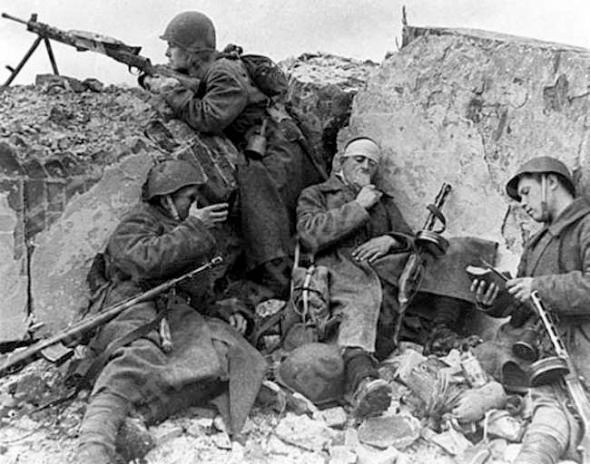
Soviet soldiers on the front line. Rzhev-Vyazemsky operation, January 1942. Front-line writer N. Nikulin: «… Otherwise we could not and could not. I read somewhere that English intelligence has been training its agents for decades. They are taught in the best colleges, create athletes, intellectuals, capable of all experts in their field. Then such agents handle global affairs. In Asian countries, the task is given to a thousand or ten thousand somehow, hastily trained people in the hope that even if almost everyone fails and will be destroyed, at least one will fulfill its mission. There is neither time, nor funds for training, nor experienced teachers here. Everything is done in a hurry – they did not have time before, did not think, or even did a lot, but not so. Everything is done by gravity, by intuition, mass, number. This is the second way we fought. In 1942, there was no alternative. The wise Master in the Kremlin understood everything perfectly, knew and, suppressing everyone with iron will, commanded one thing: „Attack!“ And we attacked, attacked, attacked… And the mountains of corpses near Pogosti, Nevsky Pyatachkov, nameless heights grew, grew, grew. So was preparing a future victory. If the Germans had filled our headquarters with spies and saboteurs, if there was mass betrayal and the enemies developed a detailed plan for the collapse of our army, they would not have achieved the effect that was the result of idiocy, dullness and irresponsibility of the soldiers …»
Конец ознакомительного фрагмента.
Текст предоставлен ООО «ЛитРес».
Прочитайте эту книгу целиком, купив полную легальную версию на ЛитРес.
Безопасно оплатить книгу можно банковской картой Visa, MasterCard, Maestro, со счета мобильного телефона, с платежного терминала, в салоне МТС или Связной, через PayPal, WebMoney, Яндекс.Деньги, QIWI Кошелек, бонусными картами или другим удобным Вам способом.






